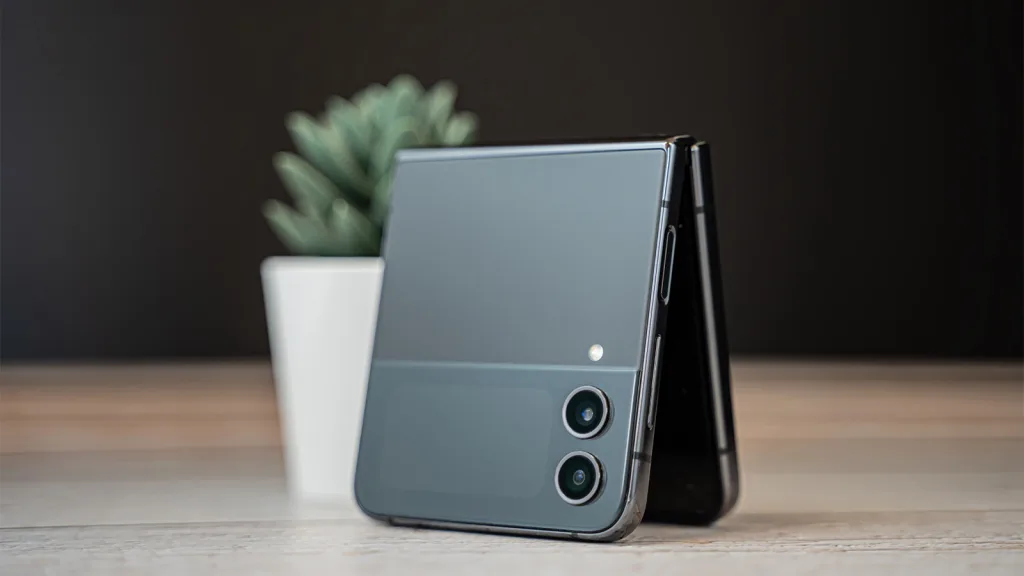Are Foldable Smartphones Worth Buying?

Over the past few years, foldable smartphones have revolutionised the mobile industry by blending cutting-edge technology with innovative design. As we approach 2025, these devices are becoming increasingly popular, but the question remains: are they worth the investment? Below, we explore the key advantages and disadvantages of foldable smartphones, helping you decide whether they are the right choice for you. Understanding the nuances of this technology will give you a clear perspective on whether it aligns with your needs.
Benefits of Foldable Smartphones
Foldable smartphones offer a unique combination of functionality and aesthetics, which sets them apart from traditional devices. By combining innovation with practicality, these devices redefine the way we interact with mobile technology. Let us take a closer look at the specific benefits that make foldable smartphones stand out in today’s market.
Innovative Design and Versatility
The standout feature of foldable smartphones is their ability to switch between compact and expanded modes. This design not only allows users to enjoy a larger screen for gaming, reading, or multitasking but also ensures portability by folding into a smaller size. The foldable design caters to different user scenarios, whether for leisure or professional use. Additionally, foldable smartphones showcase an ergonomic approach, reducing hand fatigue during prolonged usage.
Moreover, foldable devices often come equipped with advanced hinge mechanisms that ensure smooth transitions between modes. This adds a layer of sophistication and reliability to their overall functionality. The adaptability of these devices also makes them an excellent choice for users seeking both a tablet and a smartphone in one compact device.
Enhanced Multitasking
Foldable smartphones often come equipped with split-screen functionality, enabling users to run multiple apps simultaneously. For example, professionals can draft emails on one side of the screen while referencing documents on the other. This multitasking capability is further enhanced by the larger screen size, which eliminates the constraints of traditional smartphones.
The ability to run several applications seamlessly appeals not only to professionals but also to casual users. Whether you are watching a video while texting or taking notes during a webinar, foldable smartphones create a more streamlined and efficient user experience. Their compatibility with styluses and external keyboards also extends their utility, making them suitable for students and creative professionals alike.
Improved Display Technology
Most foldable smartphones utilise advanced OLED or AMOLED displays, which deliver vibrant colours, deeper blacks, and a superior viewing experience. The increased screen size enhances visual immersion, whether for gaming, video streaming, or editing photos. Moreover, the latest foldable models feature displays with high refresh rates, providing smoother scrolling and improved responsiveness.
As manufacturers continue to innovate, foldable screens are becoming increasingly durable. Protective coatings and advancements in screen materials have improved resistance to scratches and other forms of damage, ensuring longevity. Users can now enjoy the visual advantages of cutting-edge display technology with fewer concerns about durability.
Drawbacks of Foldable Smartphones
Despite their innovative appeal, foldable smartphones are not without limitations. While their design and features are impressive, potential buyers should carefully consider the drawbacks. Below, we explore the most significant challenges that accompany foldable smartphone technology.
Durability Concerns
While manufacturers have significantly improved the durability of foldable screens, they remain more fragile than conventional smartphone displays. The folding mechanism introduces an additional point of vulnerability, particularly at the hinge. Over time, repeated folding and unfolding may lead to wear and tear that affects the device’s functionality.
Additionally, foldable smartphones are not yet as resistant to water and dust as their traditional counterparts. This makes them less ideal for users who require robust durability. While protective cases can mitigate some risks, they often add bulk to the device, reducing the sleekness that many users appreciate.
High Price Tags
Foldable smartphones are typically priced at a premium compared to traditional devices. The advanced technology and materials required for their production contribute to their high cost. For consumers, this means weighing the benefits of foldable features against the financial investment.
The high price point may also limit the audience for these devices, as budget-conscious consumers often opt for traditional smartphones with comparable performance. Additionally, the rapid pace of technological innovation in the industry raises concerns about the long-term value of such an expensive purchase, as newer models with enhanced features are released frequently.
Limited App Optimisation
Another significant drawback is that not all apps are optimised for foldable screens. While popular applications have been updated to utilise the larger displays effectively, many still struggle to adapt to the unique form factor. This can result in a fragmented user experience, with some apps appearing stretched or misaligned.
For users who rely on specific apps, this lack of optimisation may diminish the appeal of foldable smartphones. Developers are actively working to improve compatibility, but the process is ongoing and varies across platforms. Until full app optimisation becomes standard, users should consider whether this limitation will impact their daily smartphone usage.

Should You Buy a Foldable Smartphone?
The decision to invest in a foldable smartphone ultimately depends on your needs, budget, and preferences. While these devices are undeniably innovative, they are not suitable for everyone. Below, we outline scenarios in which foldable smartphones may or may not be the right choice.
Technology Enthusiasts and Early Adopters
If you are someone who values the latest technology and enjoys exploring innovative devices, a foldable smartphone could be a perfect fit. These devices offer a glimpse into the future of mobile technology and are ideal for tech enthusiasts who appreciate cutting-edge advancements. Foldable smartphones often come with features that set them apart, making them a rewarding choice for those who prioritise uniqueness and innovation.
Moreover, early adopters can benefit from being among the first to experience and utilise a technology that is reshaping the industry. The sense of exclusivity and novelty that foldable smartphones bring can add value for individuals who enjoy staying ahead of trends.
Professionals and Multitaskers
For professionals who require enhanced multitasking capabilities, foldable smartphones provide a significant advantage. The ability to run multiple apps simultaneously on a larger screen can boost productivity and efficiency. These devices are particularly useful for remote workers and frequent travellers who need functionality and flexibility in one compact device.
Their compatibility with productivity tools such as styluses and document editing apps further extends their appeal. Whether you are managing emails, attending virtual meetings, or creating content, foldable smartphones streamline workflows and reduce the need for additional devices.
Cost-Conscious Buyers
If budget constraints are a concern, it might be worth waiting a few more years. As the technology becomes more widespread, prices are likely to decrease, making foldable smartphones more accessible to the average consumer. Advancements in manufacturing processes are also expected to improve durability and app compatibility, further enhancing their value over time.
For now, traditional high-end smartphones offer a more cost-effective solution for users who prioritise performance and reliability. The steady evolution of the smartphone market ensures that budget-conscious buyers still have access to devices with excellent features and build quality.
In conclusion, foldable smartphones represent a fascinating evolution in mobile technology. While they come with undeniable benefits, it is crucial to weigh these against the potential drawbacks to make an informed decision. As the market continues to evolve, these devices may soon transition from niche products to mainstream staples, reshaping the way we interact with mobile technology.


